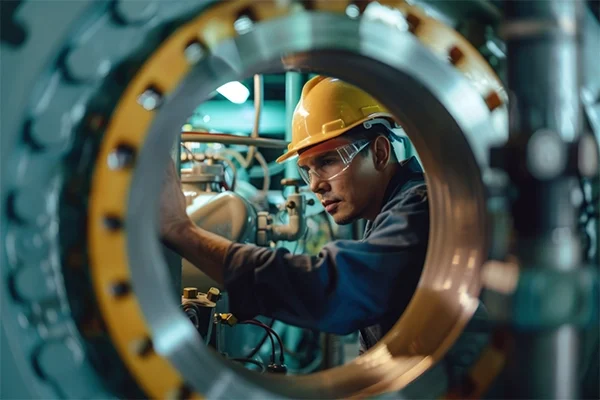On every ship and in every industrial plant, there are parts that rarely attract attention, but without which nothing would work. You know it: valves and measuring instruments are those invisible allies that guarantee safety, control, and stability in all types of operations. A malfunction can compromise not only efficiency, but also people’s lives and the future of the vessel.
The role of valves in operational safety
Valves are the silent guardians of systems. They control steam pressure, stop fuel leaks, and regulate flow rates that, if left unchecked, can pose significant risks.
On ships that cross oceans for weeks on end, having certified, corrosion-resistant valves is not a luxury, it is a necessity. Those of you who work in maintenance experience this every day: a valve in poor condition can cause a serious breakdown in the middle of a voyage.
Measuring instruments: eyes that never rest
Without reliable measurements, it would be impossible to navigate safely. Pressure gauges, thermometers, level indicators, and flow meters act as the eyes of the system, providing constant information on critical variables.
You will have noticed that, thanks to these instruments, crews can anticipate pressure changes, prevent overheating, and ensure that engines always operate within safety margins.
Safety-oriented innovation
Technology has not only improved efficiency, it has also enhanced safety. Today, there are automatic shut-off valves that activate in emergencies, as well as digital instruments that issue real-time alerts if they detect anomalies.
You will see that, thanks to integration with centralized systems, you can now monitor several parameters at once and act immediately if something is out of the ordinary. This reduces reaction times and minimizes risks in critical operations.
International regulations and quality standards
Safety depends not only on goodwill, but also on compliance with strict international regulations. Organizations such as the IMO establish clear requirements for valves and instrumentation in marine environments.
You know that operating with approved equipment not only avoids penalties, but also gives confidence to the crew and shipowners, ensuring that each component performs under the most demanding conditions.
The human factor in the use of instrumentation
No matter how advanced the systems are, it is you who make the difference. Training in the use of instruments and early problem detection is as important as the technology itself.
A trained crew can interpret data, respond quickly to an alarm, and apply safety protocols before the situation becomes complicated. The combination of modern equipment and trained personnel is the best formula for ensuring safe operations.
Conclusion
Valves and instrumentation are often the unsung heroes of the marine industry. Those of you who work with them know that every valve and every gauge is critical to maintaining safety on board.
Investing in certified technology, preventive maintenance, and team training is not just a technical decision; it is a vital strategy for protecting lives, ensuring efficiency, and strengthening competitiveness in a sector that demands maximum precision.

